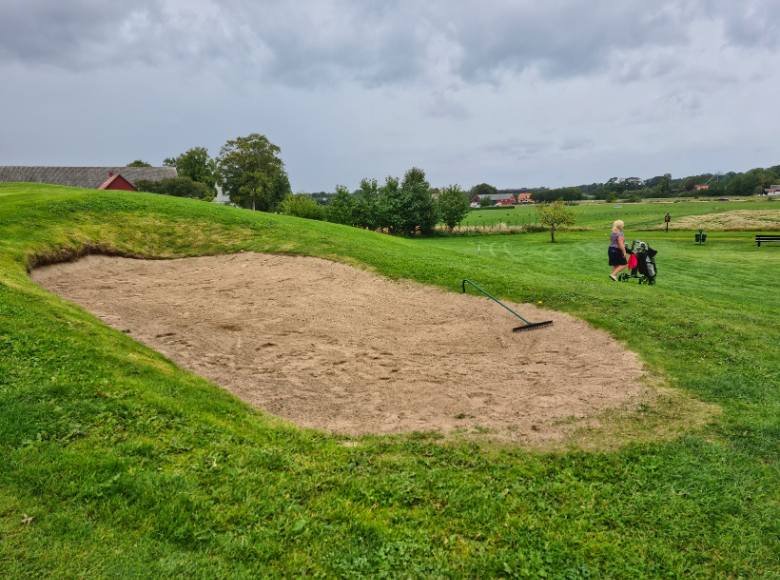Planning fall renovations for golf course construction begins with assessing the course’s requirements, which involves checking factors such as playability, drainage, turf health, aesthetics, and environmental impact. Other key aspects include establishing clear objectives, selecting the right grass varieties, budgeting and resource allocation, addressing environmental considerations, and managing construction and project management.
Golf courses are not static landscapes; they are living, evolving environments that require constant care and maintenance to provide an exceptional playing experience. Fall is a crucial season for golf course renovation and construction, as the cooler weather allows for significant work without disrupting regular play. In this comprehensive guide, we will explore the essential aspects of planning fall renovations for golf course construction, from assessing the course’s needs to selecting the right grass varieties and managing the project efficiently.
Assessing Course Needs
Before embarking on any golf course renovation project, a thorough assessment of the course’s current condition is essential. Engage a professional golf course architect or consultant to conduct a comprehensive evaluation. They will consider factors such as:
Playability: Assess how the course is currently performing in terms of playability and safety. Identify areas that may require changes to improve the overall golfing experience.
Drainage: Check the course’s drainage system to ensure that water is effectively managed, especially in areas prone to waterlogging or flooding.
Turf Health: Evaluate the health and quality of the existing turfgrass. Look for signs of disease, pests, or weed infestations that may necessitate renovations.
Aesthetics: Consider the visual appeal of the course. Are there areas that need cosmetic improvements, such as landscaping or bunkers?

Environmental Impact: Assess the environmental impact of the course, including water usage, chemical applications, and wildlife habitat.
By conducting a thorough assessment, you can prioritize renovation projects based on immediate needs and long-term course goals.
Setting Clear Objectives
Once you have assessed the course’s needs, it’s essential to establish clear renovation objectives. Are you aiming to enhance playability, improve aesthetics, or reduce maintenance costs? Are there specific areas of the course that require attention, such as greens, fairways, or bunkers?
Having well-defined objectives will guide the entire renovation process, helping you allocate resources effectively and ensure that the project aligns with your golf course’s mission and vision.
Selecting the Right Grass Varieties
Grass selection is a critical aspect of golf course construction and renovation. The choice of grass varieties will impact the playability, maintenance requirements, and overall aesthetics of the course. Factors to consider when selecting grass varieties include:
Climate: Choose grass varieties that are well-suited to the local climate, including temperature extremes and precipitation patterns.
Traffic Tolerance: Different areas of the golf course, such as fairways, greens, and roughs, require grass varieties with varying levels of traffic tolerance. For example, bentgrass is often used on greens due to its fine texture and ability to withstand frequent mowing.
Disease Resistance: Select grass varieties that are resistant to common turfgrass diseases prevalent in your region.
Maintenance Requirements: Consider the level of maintenance required for each grass variety. Some grasses may require more frequent mowing, fertilization, and irrigation than others.
Collaborate with a turfgrass specialist or agronomist to determine the most suitable grass varieties for your golf course renovation project.
Budgeting and Resource Allocation
Effective budgeting is crucial for the success of any golf course renovation project. Develop a detailed budget that accounts for all project expenses, including materials, labor, equipment, and any consulting fees. It’s essential to consider both the initial renovation costs and the long-term maintenance expenses associated with the changes.
Allocate resources wisely to ensure that you can achieve your renovation objectives within budget constraints. Consider phased renovations if necessary, tackling high-priority areas first and addressing others in subsequent years.
Environmental Considerations
Golf courses have come under increased scrutiny for their environmental impact. As part of your fall renovation planning, prioritize environmental sustainability. Implement eco-friendly practices, such as:
Water Management: Incorporate efficient irrigation systems, water-saving technologies, and drought-resistant grass varieties to minimize water usage.

Chemical Use: Reduce chemical applications by adopting integrated pest management (IPM) strategies and selecting disease-resistant grass varieties.
Habitat Preservation: Create wildlife-friendly habitats on the course to support local ecosystems and promote biodiversity.
Soil Health: Implement soil testing and improvement programs to enhance soil health and reduce the need for excessive fertilizers.
Construction and Project Management
Effective project management is essential to ensure that your golf course renovation proceeds smoothly and according to plan. Consider the following project management aspects:
Contractors: Select experienced contractors with a proven track record in golf course construction and renovation. Request bids and proposals from multiple contractors to compare pricing and expertise.
Scheduling: Develop a detailed project schedule that outlines timelines, milestones, and critical paths. Ensure that the renovation work minimally disrupts regular play.
Communication: Maintain open communication with contractors, staff, and golfers to manage expectations and provide updates on the project’s progress.
Quality Control: Implement quality control measures to ensure that the renovation work meets the established objectives and specifications.
Player Communication and Education
Keep golfers and club members informed and engaged throughout the renovation process. Transparent communication can help manage expectations and mitigate concerns. Host informational sessions or provide regular updates on the progress of the renovation work. Educate golfers about the benefits of the changes being made, such as improved playability or reduced maintenance costs.
Post-Renovation Care and Maintenance
After completing the fall renovations, it’s essential to establish a robust maintenance plan. This plan should include proper care for newly planted grass, ongoing pest and disease management, and regular equipment maintenance. Monitor the performance of the renovated areas and make any necessary adjustments based on real-world usage and conditions.
Thus, planning fall renovations for golf course construction is a complex process that requires careful consideration of various factors, from course assessment to environmental sustainability and effective project management. By following these essential steps and working with experienced professionals, golf course operators can enhance the quality and sustainability of their courses, providing an outstanding golfing experience for players while preserving the beauty of the landscape. With proper planning and execution, fall renovations can transform golf courses into even more exceptional and enjoyable venues for players and spectators alike.
Rely on DTE Golf® for expert planning and seamless execution of your golf course fall renovations. With our specialized knowledge and dedication to excellence, we ensure your golf course construction projects are handled with precision and care, resulting in optimal playing conditions for golf enthusiasts.
